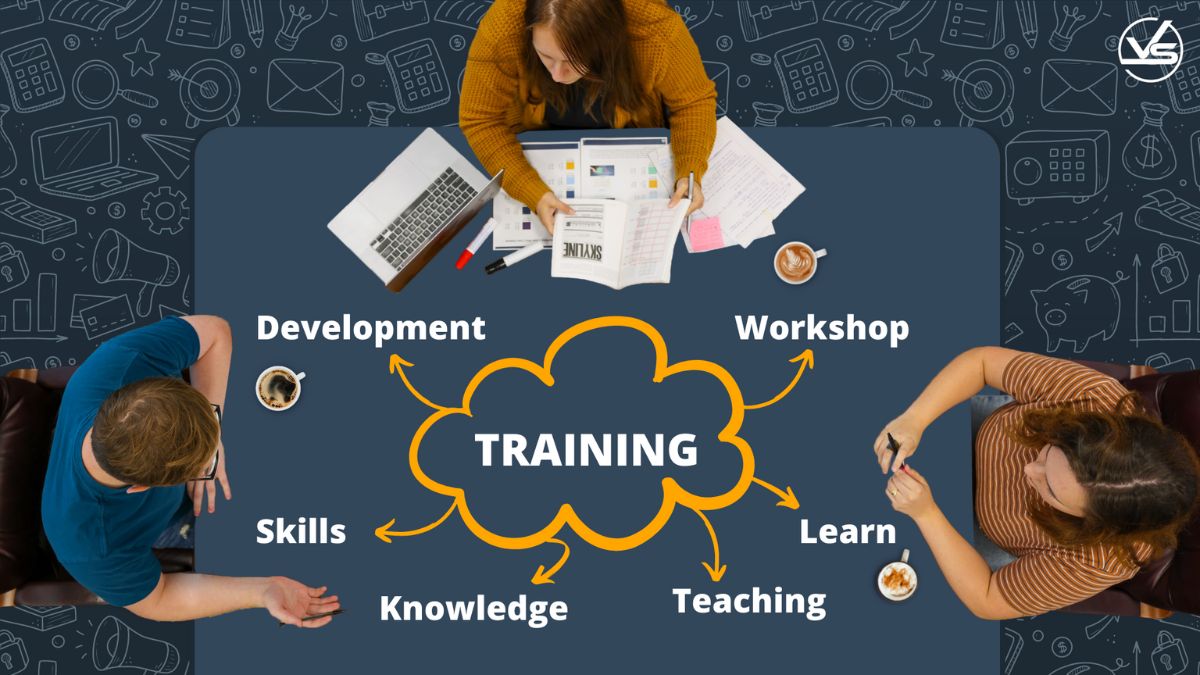
Training and development
In today’s rapidly changing world, continuous learning is no longer just an advantage – it’s a necessity. The skills that are in demand today may be obsolete tomorrow, and staying ahead of the curve is crucial for both personal and professional growth. This is where training and development (T&D) come into play.
T&D encompasses a wide range of activities designed to enhance the knowledge, skills, and abilities of individuals and organizations. It can involve anything from formal classroom training and online courses to on-the-job training, mentoring, and even informal learning opportunities like workshops and conferences.
The Importance of Training and Development
The benefits of investing in T&D are numerous:
Increased Productivity and Efficiency

When employees have the right skills and knowledge, they can work more efficiently and effectively. This can lead to increased productivity, improved quality of work, and reduced errors.
Enhanced Employee Engagement and Motivation
Investing in employee growth shows that the organization values their development. This can boost employee morale, increase job satisfaction, and foster a sense of loyalty.
Improved Innovation and Creativity
Training and development programs can expose employees to new ideas, technologies, and perspectives. This can spark creativity and innovation, leading to new products, services, and processes.
Better Decision-Making

When employees have a strong understanding of their roles and responsibilities, they are better equipped to make informed decisions. This can lead to improved business outcomes and reduced risks.
Enhanced Adaptability and Resilience
In today’s dynamic business environment, the ability to adapt to change is crucial. T&D programs can help employees develop the skills and flexibility needed to thrive in uncertain times.
Reduced Employee Turnover
Investing in employee development can help reduce employee turnover. When employees feel valued and have opportunities for growth, they are less likely to seek employment elsewhere.
Types of Training and Development Programs
There are many different types of T&D programs available, including:
On-the-Job Training
This type of training involves learning while performing job duties. It can include mentoring, coaching, job shadowing, and apprenticeships.
Classroom Training
This traditional method involves formal instruction in a classroom setting. It can include lectures, workshops, seminars, and simulations.
Online Learning
Online learning offers flexibility and convenience, with access to a wide range of courses and resources available 24/7.
Mentoring and Coaching
Mentoring and coaching provide personalized guidance and support from experienced professionals.
Conferences and Workshops
Conferences and workshops offer opportunities for networking, learning from industry experts, and staying up-to-date on the latest trends.
Creating a Successful Training and Development Program
To ensure the success of your T&D program, consider the following:
Needs Analysis
Begin by identifying the specific skills and knowledge gaps that need to be addressed. This can be done through employee surveys, performance reviews, and job analyses.
Set Clear Learning Objectives
Clearly define the desired outcomes of the training program. What specific skills or knowledge should employees gain? How will these skills be measured?
Choose the Right Training Methods
Select training methods that are most appropriate for the specific learning objectives and the needs of the target audience.
Provide Quality Training Materials
Ensure that training materials are engaging, informative, and easy to understand.
Create a Supportive Learning Environment
Provide a positive and supportive learning environment that encourages participation and interaction.
Provide Ongoing Support
Provide ongoing support to employees after the training is completed, such as coaching, mentoring, and access to resources.
Evaluate the Effectiveness of the Program
Regularly evaluate the effectiveness of the training program to ensure that it is meeting its objectives. This can be done through employee feedback, performance assessments, and other relevant metrics.
The Future of Training and Development
The future of T&D is likely to be increasingly focused on:
Personalized Learning
With advancements in technology, it will become increasingly possible to personalize learning experiences to meet the individual needs and preferences of each employee.
Artificial Intelligence (AI) and Machine Learning
AI and machine learning can be used to personalize learning paths, provide real-time feedback, and identify areas for improvement.
Virtual Reality (VR) and Augmented Reality (AR)
VR and AR technologies can create immersive and engaging learning experiences that can enhance knowledge retention and skill development.
Microlearning
Microlearning involves delivering small, bite-sized pieces of information that can be easily consumed by employees on the go.
Continuous Learning
Continuous learning will become increasingly important as the pace of change accelerates. Organizations will need to create cultures that support ongoing learning and development.
Conclusion
Investing in training and development is not only a wise business decision but also an investment in the future of your employees and your organization. By providing employees with the skills and knowledge they need to succeed, you can create a more productive, engaged, and innovative workforce. In an ever-evolving world, continuous learning is essential for both personal and professional growth. By embracing T&D initiatives and adapting to the latest trends, organizations can stay ahead of the curve and thrive in the years to come.